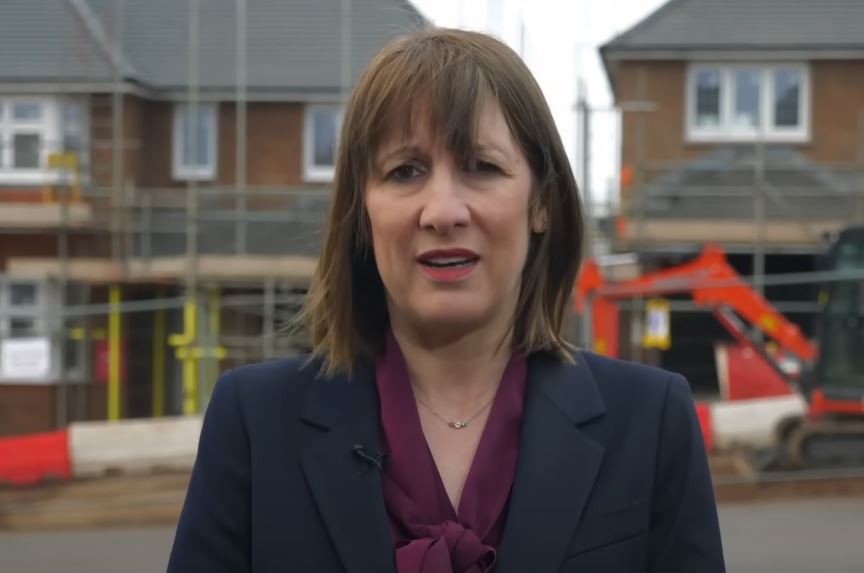
The current salary of £163,891 per year for Rachel Reeves has generated a lot of discussion, not only because of the amount but also because of the role she currently occupies. While overseeing one of the most challenging government portfolios, Reeves has redefined expectations as the first woman in British history to deliver a budget from the Treasury bench. Her pay reflects that increased responsibility—but the scrutiny she endures, particularly at a time when taxes and public spending are changing, is remarkably intense.
She assumed a position with great symbolic significance when she took possession of the keys to 11 Downing Street. Reeves has established himself as a voice for financial responsibility through deliberate planning and noticeably firm communication. She used to call her salary “tight” when she was a backbench MP making £86,000. Today, it has more than doubled. However, the political pressure that surrounds every financial choice she makes has increased along with her bank account.
Rachel Reeves – Personal, Political, and Financial Overview (2025)
| Name | Rachel Jane Reeves |
|---|---|
| Date of Birth | 13 February 1979 |
| Age (2025) | 46 |
| Position | Chancellor of the Exchequer (since July 2024) |
| Political Affiliation | Labour Party |
| Constituency | Leeds West and Pudsey |
| Total Salary (2025) | £163,891 (MP base salary + Chancellor supplement) |
| Rental Income | £75,000+ annually from two properties |
| Spouse | Nicholas Joicey (senior civil servant) |
| Children | Two (Anna and Harold) |
| Official Residence | 11 Downing Street, London |
Reeves has produced a number of extremely effective economic frameworks in the last year, many of which were implemented to control inflation and encourage long-term growth. Some of the bold tax reforms she included in her October 2024 budget caused a great deal of backlash, while others were quietly embraced by economists who respect responsible public finance. In this sense, her pay signifies more than just her personal income; it also represents a change in Labour’s current approach to economic policy, which combines ideological vision with pragmatic restraint.
However, public opinion continues to be a battlefield. Although detractors contend that her household income puts her far from the financial realities of most families, Reeves has created an image of fairness by addressing voters’ concerns about the cost of living while also approving a windfall tax and VAT extension on private education. When combined with her husband’s income and their joint rental profits, which are estimated to be over £75,000 a year, the disparity is especially stark.
To put things in perspective, Reeves and Joicey make a sizable passive income by renting out homes in South and Central London. Just one property can fetch up to £3,000 a month. Despite being lawful and openly disclosed, this additional revenue complicates her public statements, particularly when she calls for fiscal restraint and tax equity. Her choices seem to be based on long-term results rather than short-term popularity, despite these appearances.
Reeves applies a data-driven approach to her work by drawing on her economics background, which includes early positions at HBOS and the Bank of England. It’s not just numbers, though. She frequently includes a personal touch in her speeches and declarations, such as a story about how difficult it was to balance expenses even with an MP’s salary or a memory of her father pointing to Neil Kinnock on TV when she was a child. In ways that pure policy cannot, these seemingly insignificant moments lend relatability to her story.
Her economic leadership has recently been compared to Gordon Brown, both in terms of style and content. Similar to Brown, Reeves likes to work in silence, frequently behind closed doors, putting together economic frameworks that put resilience ahead of showmanship. Her establishment of the National Wealth Fund, which was intended to stimulate private sector investment, was a remarkable success in communicating a forward-thinking outlook while maintaining fiscal restraint.
Political leaders’ comprehension of domestic pressures was a key criterion during the pandemic and its aftermath. With a sensitivity that seems rooted in personal experience, Reeves has used this awareness as a lens through which to defend her choices, concentrating on mortgage rates, food costs, and energy bills. Although her financial situation is unquestionably stable, her empathy, as expressed in interviews and public statements, has not changed.
Reeves has simplified Labour’s economic messaging into one that is cautious but assured by working with party leader Keir Starmer. Their collaboration has been especially helpful in reviving public confidence in Labour’s economic management skills. Their strategy seems to be built for endurance rather than praise, despite internal conflicts and policy reorientations.
Expectations for women in high office have also changed as a result of her role. The presence of Reeves behind the red dispatch box was particularly symbolic in the context of British politics, where female chancellors had hitherto only existed in theory. She was addressing future generations of public leaders when she said, “Let today show that there should be no ceilings on your ambitions,” in addition to her peers.
She has already reorganized a number of out-of-date commitments through strategic budgeting, rerouting infrastructure investments toward contemporary priorities and scrapping pension benefits for higher earners. She continues to deliver her speeches with remarkable clarity, often fusing personal relevance with macroeconomic trends. She has distinguished herself even among her detractors with her clarity, especially in discussions concerning tax thresholds and pay caps.
Reeves will likely have to make more difficult choices in the upcoming years, including dealing with more public sector negotiations, more widespread economic slowdowns, and rising tensions over international trade. However, she maintains her optimism regarding Britain’s fiscal future by focusing her strategy on targeted redistribution and sustainable growth.
